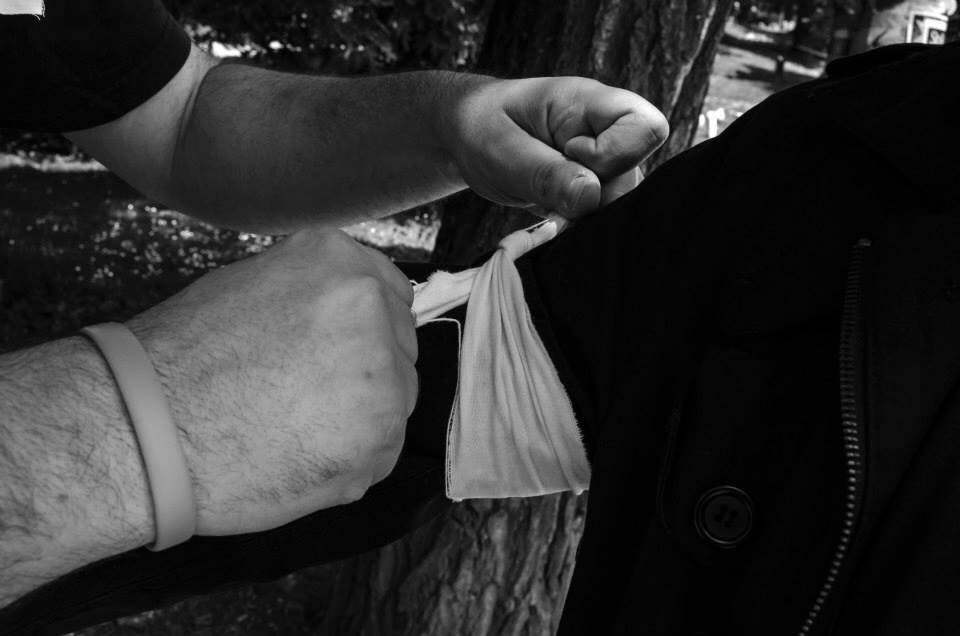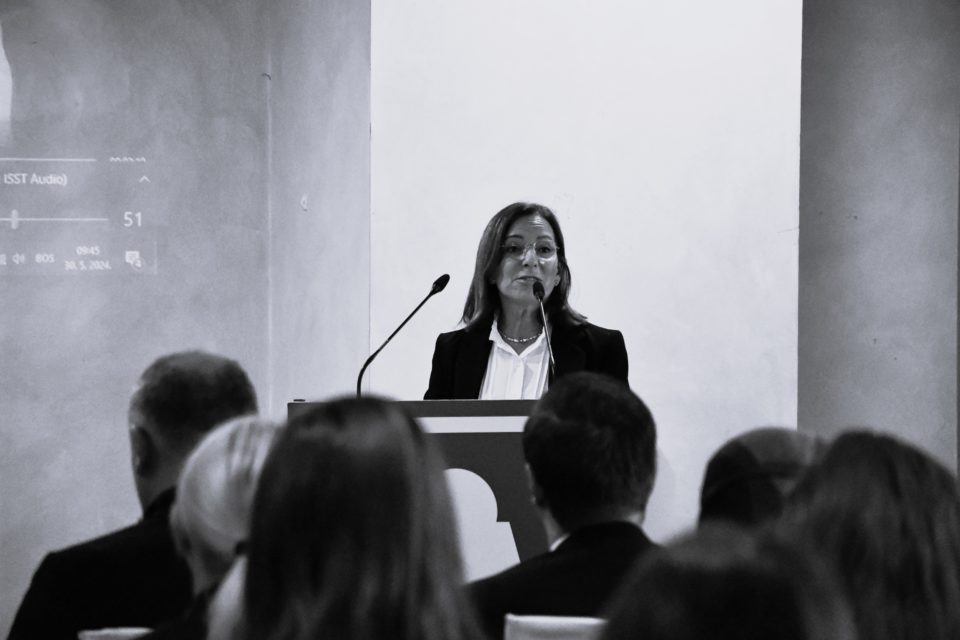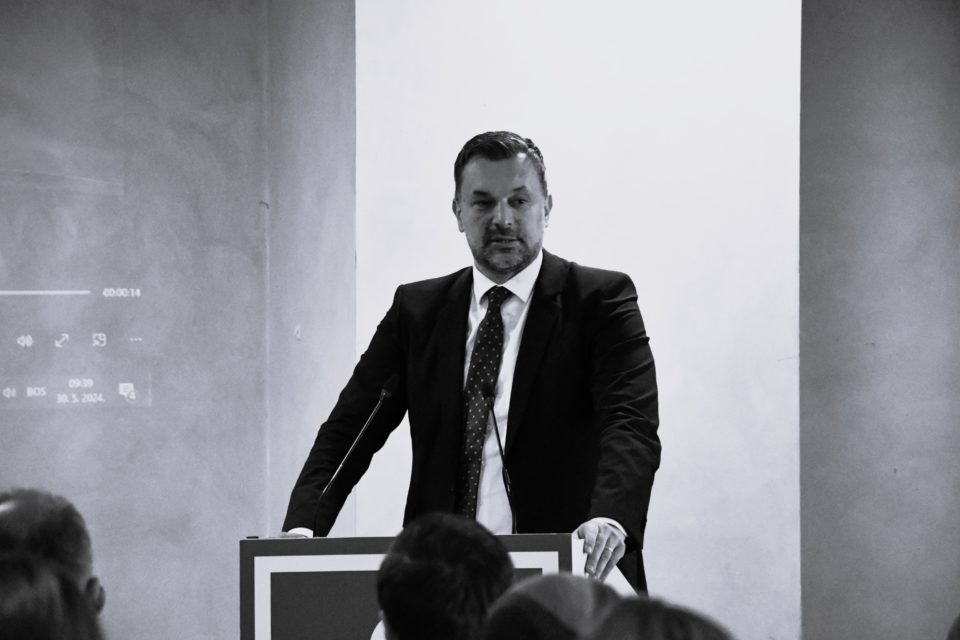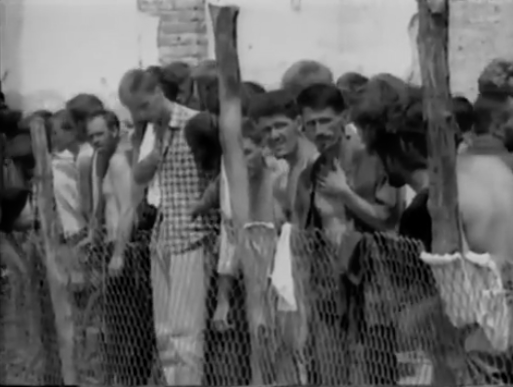
According to available data, there were 657 detention camps and centers in Bosnia and Herzegovina (BiH) during the 1992-1995 war in Bosnia and Herzegovina. Men, women, and children were imprisoned and subjected to various forms of torture, many of whom did not survive.
The detention camps of Omarska, Keraterm, and Trnopolje in Prijedor have become synonymous with horrific killings, civilian suffering, and inhumane treatment. A two-day international conference on the detention camps in Bosnia and Herzegovina, held on the 30th and 31st May in Prijedor, brought together experts and survivors to discuss the issues of justice and the necessity of education based on judicially established facts.
The conference on detention camps in Bosnia and Herzegovina was an opportunity to talk comprehensively about camps and places of detention from the war in Bosnia and Herzegovina. The conference sought to facilitate a conversation based on judicially established facts, in order to work on building reconciliation and nurturing a culture of constructive memory. The panel discussions included the testimonies of camp inmates, as well as the findings of experts and scientists,
This is the first international conference on the camps in Bosnia and Herzegovina, which was held in Prijedor this year and organized by the Kozarac Detainees Association and Sarajevo Memorial Center.
The Facts
Judge Graciela Gatti Santana, President of the International Residual Mechanism for Criminal Tribunals (IRMCT), reminded the conference that shocking images of emaciated detainees from Prijedor quickly spread and caused worldwide outrage in 1992. Together with reports of other crimes, these images prompted the United Nations Security Council (UNSC) to establish the International Criminal Tribunal for the former Yugoslavia (ICTY) less than a year later, in May 1993.
As established by the ICTY, Serb(ian) forces took control of Prijedor in April 1992, after which non-Serbs both from the city and surrounding areas were detained in prison camps. Those who were not detained still suffered abuse, physical violence, or were killed, and had to wear white armbands.
“Extensive evidence presented before the ICTY showed that, within the Prijedor camps, detainees were subjected to unspeakable horrors, including beatings, rape, sexual violence, torture, and executions, as well as abuse, humiliation, and psychological mistreatment,” said Judge Santana.

More than 40 individuals, representing over a quarter of all those indicted by the ICTY, were charged for their involvement in crimes committed in the municipality of Prijedor, including those committed in the detention camps.
Judge Santana emphasized the extraordinary courage and determination of the camp survivors of all ethnicities in Bosnia and Herzegovina who testified before the ICTY. “Their willingness to face their traumas, relive all the painful experiences, and seek justice serves as a monument to their indomitable spirit and resilience in the face of unimaginable hardships. These brave individuals provided crucial evidence and shed light on the truth, enabling justice to be served. Their contribution is indispensable,” added Santana.
ICTY witness and former detainee from Prijedor, Jusuf Arifagić, also spoke. He represented the Kozarac Detainees Association, which co-organized this conference with the Sarajevo Memorial Center. Arifagić emphasized that the conference was of a scientific nature and concerns all camps on the territory of Bosnia and Herzegovina, regardless of which ethnic groups were imprisoned in them.
“It is important to provide a scientific perspective on the events of 1992 because that year marked a turning point that brought about divisions among peoples and all the evil that happened here. I believe we have had enough of divisions among people and that the peoples in Bosnia and Herzegovina, especially here in Prijedor, need to work on unity because only unity can provide a good future for the coming generations,” said Arifagić.
A Museum Exhibition on the Detention Camps in Bosnia and Herzegovina.
Elmedin Konaković, Minister of Foreign Affairs of Bosnia and Herzegovina, was also present. He emphasized the importance of remembering the suffering in these areas and resisting those who distort historical facts by creating falsehoods and lies.
“Such gatherings and conferences can sometimes be painful and sad, but they are truly necessary,” said Konaković, underscoring that, through dialogue, education, and truth, we contribute to building peace and reconciliation. He added that it is our duty to work on building a society that respects human rights and the dignity of every person.

The Government of Sarajevo Canton is committed to supporting projects that contribute to collective memory and strengthening cohesion, emphasized Elvedin Okerić, Chairman of the Sarajevo Canton Assembly. Through financial support, infrastructure projects, and promoting awareness of the importance of memorialization, he reiterated the desire to ensure that the memory of the past is passed on to future generations. “Let the conclusions of this conference be the starting point for a future museum exhibition on all the camps in Bosnia and Herzegovina,” said Okerić.
Ahmed Kulanić, Director of the Sarajevo Memorial Center, spoke about the importance of hearing the voices of former camp survivors and presenting the truth based on established facts. He emphasized the need to overcome the challenges ahead, which are rooted in the events of the 1990s, including the killings and crimes that occurred. The goal, he stated, must be building reconciliation and sustainable peace.
“The Center is working on establishing a museum of detention camps in Sarajevo, where all the stories of torture and crimes against detainees will be consolidated,” said Kulanić.
Seid Omerović, President of the Association of Detainees of Bosnia and Herzegovina, spoke about the rights of former detainees, who, according to the Association’s data, were held in 657 camps and detention sites. He emphasized that there is no adequate legal solution for more than 95 percent of the detainees across Bosnia and Herzegovina. Such legal solutions would entail, for example, a law on the rights of former inmates, ensuring their right to treatment, secure employment, and other benefits.
“About 100,000 detainees across Bosnia and Herzegovina are not protected by any law. Now is the right time to enact a law on the protection of victims of war torture, or as they call it, a law on detainees,” said Omerović.

Haris Rovčanin is a journalist and assistant editor at the Balkan Investigative Reporting Network (BIRN) in Bosnia and Herzegovina, which compiled the Database on Judicially Established Facts about the War. He stated that court judgments have established the existence of hundreds of camps and detention sites where civilians were held. He added that these were not sorting facilities, despite the fact such a revisionist narrative is occasionally heard.
“It is very interesting that numerous educational institutions were converted into detention camps during the war, including the High School Center in Foča, where women were imprisoned and subjected to various forms of torture, rape, and sexual abuse, the High School Center in Rogatica, the Technical School in Karakaj, Hasan Kikić Elementary School in Sanski Most, Petar Kočić in Bosanska Krupa, or even Nikola Mačkić School in Ključ,” said Rovčanin.
He further explained, court judgments have noted that guards, guard commanders, security chiefs, and so on, from detention camps across Bosnia and Herzegovina were both soldiers and police officers and equally participated in the organizational structure of the camps.
According to the material evidence from the ICTY, Rovčanin stated that around 23,000 detainees passed through the Trnopolje camp. “Most of the detention camps today have been converted into private properties, and numerous former detainees are not even allowed to approach these places on the anniversary of their closure or the release of the first detainees, to commemorate, lay flowers, or even more so, to set up a memorial plaque,” emphasized Rovčanin.
The Contribution to Changing International Justice
Journalist Erna Mačkić, representing the Post-Conflict Research Center (PCRC), spoke about the importance of monitoring trials at the Hague Tribunal, as well as courts in Bosnia and Herzegovina and the region, and the role of journalists during the war. She emphasized that while some journalists contributed to the enactment of crimes through propaganda, others helped the world learn about the atrocities being committed.
“On August 6, 1992, journalists from British media outlets ITN and The Guardian revealed to the world the existence of camps for non-Serb civilians in the vicinity of Prijedor. Thanks to them, shocking images of detainees circulated worldwide within a few days, shaking humanity,” said Mačkić, adding that in this case, journalism contributed to forever changing the face of international criminal justice.

She recalled the words of journalist Ed Vulliamy from the documentary “Crimes before the Tribunal: Prijedor”: “Nothing I had ever experienced could prepare me for what we saw. Some of the prisoners were as thin as skeletons, with shaved heads. And then I thought where am I? In what era am I? There is nothing quite like the sight of the prisoner desperate to talk and convey some terrible truth that is so near yet so far, but who dares not. Their states burn.”
In addition to the crimes committed in the camps in Prijedor, Mačkić also reminded the conference of the executions of Prijedor residents at Korićanske Stijene, in the village of Zecovi, and the surrounding villages, with 3,176 civilians being killed. “Around 50 individuals have been convicted for war crimes and crimes against humanity committed in and around Prijedor in the Tribunal and the Court of Bosnia and Herzegovina,” added Mačkić, citing data from the database compiled by the Post-Conflict Research Center.
Peter Maass, an American journalist and writer, addressed the conference participants via video message, speaking about a series of articles he has written on the denial of genocide and crimes in Bosnia and Herzegovina. He added that he continues to do so today and writes about what the state of Israel is committing in Gaza, with his reference point being what he saw in Bosnia and Herzegovina.
“Our world wants to forget, or is told to forget, or is told that what it believes to know is actually not true. So we’ll always be fighting a war in which the guns still sound like those in Bosnia in 1995,” Maass stated, recalling the phrase that every war is fought twice, first on the battlefield, and second in memory.

Memories, he added, must be taken into consideration so that those who have not seen what we have seen can continue the struggle that will last beyond our lifetimes.
Eli Tauber, Director of the Archive of the Jewish Community in Bosnia and Herzegovina, spoke about the deportation of Jews to camps during the Holocaust from Sarajevo, as well as from all of Bosnia and Herzegovina. He recalled the Kruščica camp near Vitez, Jasenovac, camps across the Republic of Croatia, and then the Auschwitz camp.
“Before World War II, 12,500 Jews lived in Sarajevo, and 14,500 in all of Bosnia and Herzegovina. When we talk about the Holocaust, we do not count those Jews who came as refugees from Germany, Austria, and were in stationary centers in Sarajevo, Čapljina, Brčko, and so on. 8,500 Jews from Sarajevo perished, and a total of 10,500 Jews in Bosnia and Herzegovina,” said Tauber.
“The Tenth Circle of Hell”
A special panel at the conference was dedicated to survivors from the camps in Prijedor, Foča, Mostar, Bratunac, and Sarajevo. They spoke about the suffering they endured, as well as the challenges they face today, such as the lack of legal provisions recognizing their rights, the lack of prosecution of war criminals, and the ongoing search for the missing.
Survivor Almin Dželilović said he was 21 years old when he was imprisoned in the camp in Hadžići, when “his life collapsed”. From Hadžići, he was transferred to the Slaviša Vajner Čiča barracks, then to the Kula camp in Lukavica, and finally to the Technical High School of Graphic Design and Multimedia Technology in Ilidža. He continues to search for 51 fellow citizens who are listed as missing. “May these children never experience even a second of what we experienced from 1992 to 1995,” Dželilović wished.
Survivor Midheta Koloper stated that they are searching for 619 missing persons from Foča, including 161 women. “We are fighting, and we will continue to fight,” emphasized Koloper.
Survivor Emir Hajdarović was imprisoned in multiple detention camps in the area of Herzegovina. He was 20 years old and spent 309 days in the camps. “After 30 years, no government has paid attention to the detention camps and detainees. They have not resolved their status,” said Hajdarović.
Survivor Rezah Hukanović stated that there were no war activities in Prijedor, but people were imprisoned in camps, and more than 3,000 were killed, including six sons and the husband of one mother Hava. “The largest post-war mass grave is Tomašica,” emphasized Hukanović, reminding the conference that he wrote a book called The Tenth Circle of Hell about six months in the death camps Omarska and Manjača, a book which The Observer has compared to Primo Levi’s classic, If This Is a Man.
Professor Sead Selimović from the Faculty of Philosophy in Tuzla spoke about the detention camps in the Bosnian Podrinje (Drina Valley) area functioning as a mechanism through which to change the ethnic structure of the population during the war. Senadin Lavić from the Faculty of Political Sciences at the University of Sarajevo spoke about the camps and mass graves of Bosniaks.
“Someone gathered Bosniaks in camps, places of detention. Tens of thousands of them were killed. From the camps, they ended up in mass graves. A mass grave is an instrument to prove that they never existed, that they never even were…” said Lavić.
Lavić said that the crucial obstacle today is the lack of deep reflection, and for memory to come alive, it is necessary to institutionalize it. Therefore, as he emphasized, it is necessary to open memorial centers in Mostar, Sarajevo, Travnik, Prijedor, Doboj, Bihać, and everywhere where this kind of extermination project has achieved results.
Professor Hariz Halilović from the University of Melbourne spoke about reclaiming stolen memories at Bosnian sites of pain, memorialization policies in post-genocide society. He explained that by stolen memories of pain, he means places where wrong memories are inscribed. “It should be noted that the physical space should not be understood as some kind of static environment (…) which is neutral in understanding what happened. Therefore, the physical space itself becomes part of that commemorative space,” added Halilović.
The necessity of building memorial centers was one of the conclusions of the two-day conference on camps in Bosnia and Herzegovina, as well as the understanding that historical accuracy is the foundation for building trust, a better future, communal living, but above all for the establishment of justice and truth.





